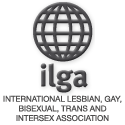Members of Nepal’s LGBT community were once openly derided as “social pollutants,” but now enjoy social and political rights—including legal recognition of a third gender—that put the country leagues ahead of much of the rest of the world. The past decade has proved critical in that evolution, as LGBT activists won significant victories in Nepal’s courts. In an email interview, Kyle Knight, a researcher with the LGBT Rights Program at Human Rights Watch, explains how LGBT activists in Nepal used a combination of tactics to overcome an archaic and patriarchal legal system and put the country at the forefront of LGBT rights worldwide.
WPR: What is the general human rights situation for LGBT people in Nepal, how has it changed in recent years, and what are the most significant milestones marking this progress?
Kyle Knight: For about a decade now, Nepal has been a beacon for LGBT rights progress in Asia and globally, due to a series of achievements that started with a resounding 2007 Supreme Court decision in Pant v. Nepal in which the bench ordered the government to legally recognize a third gender category, audit all laws to identify those that discriminated against LGBT people, and form a committee to study legal recognition of same-sex relationships. In response to the court’s order, the government identified over 100 laws that needed to be changed to eliminate discrimination against LGBT people. A government-appointed committee then issued a report in early 2015, effectively recommending the legalization of same-sex marriage. But neither gained as much traction as the Supreme Court’s order to legally recognize a third gender category. By 2010, the Election Commission had added the third option to voter rolls, and immigration forms swiftly followed suit. In 2011, Nepal was the world’s first country to include a third gender on its federal census. And in 2015, the government started issuing passports that recognized three genders. That same year, Nepal became the world’s 10th country to specifically protect LGBT people in its constitution.
Still, LGBT Nepalis face challenges. Tangible implementation of the various government orders has been piecemeal, a 2014 United Nations report noted. The government’s bureaucracy remains sclerotic, and government officials have continued in recent years to harass LGBT groups, including by alleging that organizing around homosexuality is illegal in the country.
WPR: What are the political and other factors that have created conditions for an expansion of LGBT rights, and to what extent are these specific to Nepal?
Knight: The path to inclusion and protection for a group at times openly derided as “social pollutants” was neither linear nor predictable, and took a unique combination of courage and political wisdom.
Engaging the law was crucial, but in a society with a densely patriarchal legal system, that was no easy task. Nepal was never colonized, and its central legal system is a unique, expansive code combining civil and criminal law. One-third of the 700-page original 1854 draft addressed the exchange of food and sex between castes. A major revision in the 1960s introduced a clause forbidding “unnatural sex.” The first-time activists recall the “unnatural sex” clause being used against sexual minorities came in 2004, when a private lawyer filed a Supreme Court case arguing that the clause should force the government to shut down Blue Diamond Society, or BDS—an NGO set up to work on “sexual health and rights” that was launched in 2001. The government replied that homosexuality was not a criminal issue, and the case was dismissed.
This left Nepal’s fledgling LGBT rights movement in a different position than its neighbors—in particular, India, where a court case challenging the country’s colonial-era sodomy law had been filed in 2001. Without the obvious target that criminalization of same-sex behavior represents, LGBT activists had to be creative in their demands for visibility and rights. Around this time, Nepal was also entering the most brutally violent period in its civil war. Frequent curfews in urban areas and an increased securitization of public space contributed to abuses against LGBT people, and activists used the U.N. field office—set up during the civil war—as an avenue to raise their grievances.
WPR: What have been the most effective strategies adopted by local activists, and how does the general approach of activists in Nepal differ from Global North approaches?
Knight: LGBT rights activists in Nepal applied a few theories in their work. First, they built alliances early and often—women’s rights groups were the clear allies in the early days of the movement, and that network of support expanded to include political parties as activists’ clout grew. Second, beyond educating parties, activists entered into electoral politics. This is perhaps most prominently reflected in the rise of Sunil Babu Pant, who in 2008 became Asia’s first openly gay federal-level elected official. But it wasn’t just Pant. Hundreds of LGBT people, many associated with rights groups, have stood for elections and applied for government posts in recent years, claiming mainstream political space. And third, Nepali LGBT rights activists delivered their message in two very different octaves. In appealing to international human rights, the activists wielded the Yogyakarta Principles, guidelines that interpret international human rights law as it applies to sexual orientation and gender identity, at the Supreme Court, while at the U.N. they appealed to international mechanisms that had emerged years before LGBT issues rose to today’s prominence. Utilizing the local vernacular—for example, by co-opting a traditional Nepali festival as their “pride” celebration without renaming it as “gay”—they deftly negotiated legal recognition of a third gender during a period when discussions of minority identity categories—mostly caste and ethnic—colored mainstream political discourse. Throughout, activists embraced the often-incomprehensible fluidity of Nepali politics while demanding that their fundamental rights be respected.
by Kyle Knight – Senior Researcher, Lesbian, Gay, Bisexual, and Transgender Rights Program
Source – Human Rights Watch







